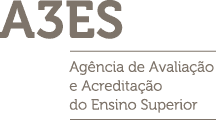Programme Structure for 2026/2027
| Curricular Courses | Credits | |
|---|---|---|
| 1st Year | ||
|
Research Methods in Hospitality and Tourism
6.0 ECTS
|
||
|
Critical Issues in Hospitality Human Resources
6.0 ECTS
|
||
|
Managing Hospitality and Guest Service Organizations
6.0 ECTS
|
||
|
Data Analysis in Hospitality and Tourism
6.0 ECTS
|
||
|
Strategic Marketing in Hospitality and Tourism
6.0 ECTS
|
||
| 2nd Year | ||
|
Work Project in Hospitality and Tourism Management
60.0 ECTS
|
||
|
Dissertation in Hospitality and Tourism Management
60.0 ECTS
|
Recommended optative
Objectives
The Master's programme in Hotel and Tourism Management is aimed at graduates in management, tourism or related areas who wish to progress in their training and careers. This programme aims to:
Provide students with advanced knowledge and gain an in-depth understanding of fundamental management principles and their application in the hotel and tourism sector.
Develop specialised knowledge in areas aligned with their professional interests and career goals, including areas such as sustainable tourism, revenue management, digital marketing or event management.
Cultivate research and analytical skills by acquiring the methodologies, procedures and techniques needed to carry out applied research.
Improve critical thinking and decision-making in industry practices, analyse complex situations and make informed decisions in a dynamic environment.
Promote effective communication skills, both written and oral, that enable them to articulate ideas, present research results and participate in professional discourse.
Promote a global perspective of the hospitality and tourism industry, preparing students to navigate international markets and intercultural interactions.
To instil ethical and sustainable practices in tourism and hospitality, with an emphasis on responsible management practices that contribute to sustainable development.
By the end of the program, the students in the Master in Hospitality and Tourism Management will have gained the following competencies and reached the following learning objectives:
1) Competence in producing written communication in business environments with impact and effectiveness, namely:
1.1) Produce a well-structured written document
1.2) Clearly identify and communicate the relevant key messages within a written document
1.3) Clearly express the link between theoretical arguments and specific practical issues within a written document
1.4) Effectively summarize ideas and conclusions within a written document
2) Competence in delivering oral communication in a business environment with impact and effectiveness, namely:
2.1) Select the appropriate format for a given presentation
2.2) Demonstrate confidence that the communication was well-prepared
2.3) Develop and make presentations with impact
3) Competence in ethical behavior, responsibility, and sustainability, namely:
3.1) Identify and discuss the myriad challenges surrounding corporate responsibility and/or sustainability
3.2) Recognize and critically reflect on ethical dilemmas
4) Competence in Thinking critically about topics, namely:
4.1) Select and interpret relevant data and references from academic and non-academic sources
4.2) Analyse issues effectively, leading to the formulation of well-supported conclusions or solutions
5) Competence in teamwork and interpersonal dealing, namely:
5.1) Organize and allocate tasks among group members to meet goals in an efficient and effective manner
5.2) Show a willingness to listen to others and exhibit curiosity about what people are saying and experiencing
5.3) Schedule tasks to meet milestones deadlines
6) Competence in Hospitality and Tourism Management, namely:
6.1) Apply the principles, best practices, and trends relevant to successfully managing tourism and hospitality businesses and organizations
6.2) Analyze and evaluate data related to hospitality and tourism to inform decision-making and identify industry trends and opportunities
6.3) Develop sustainable and cost-effective solutions for hospitality and tourism businesses, considering a globally competitive environment.
Thesis / Final work


